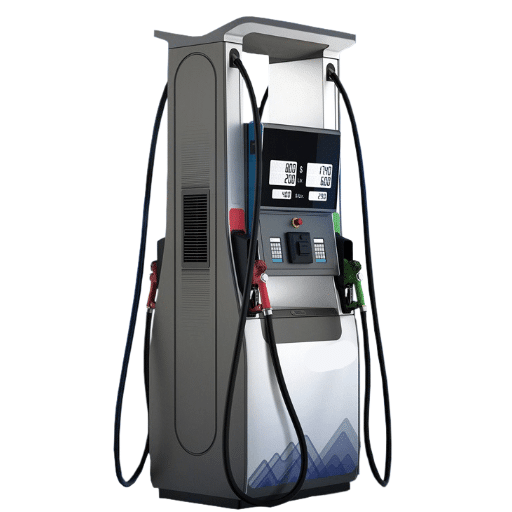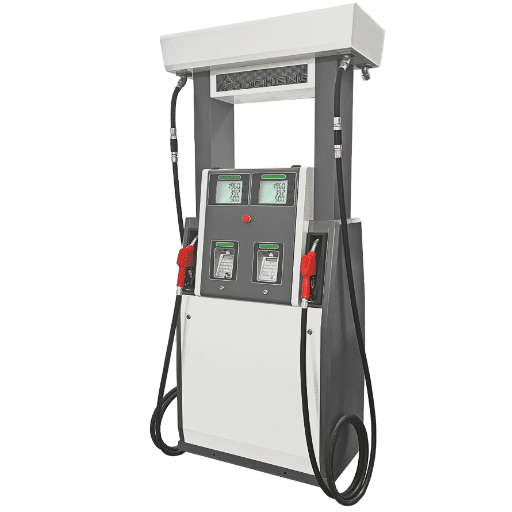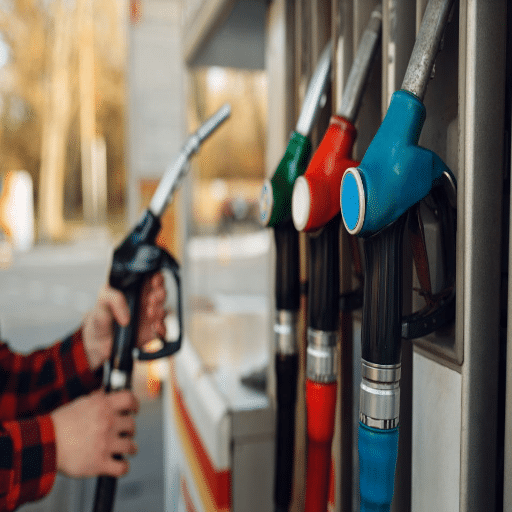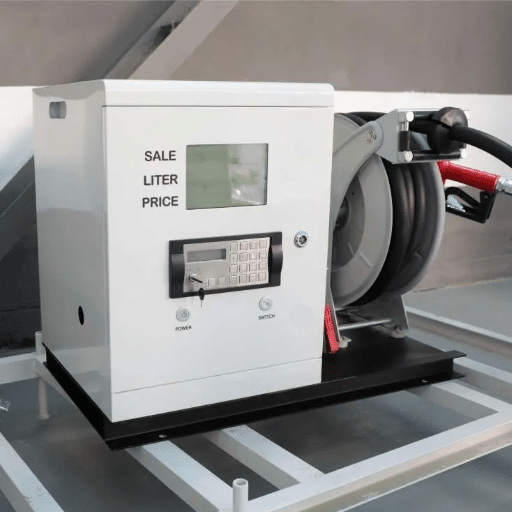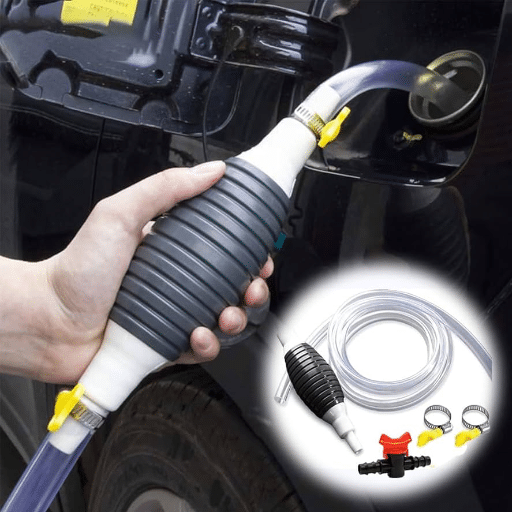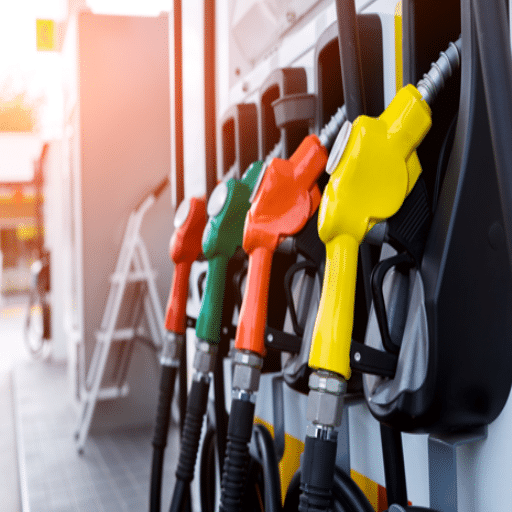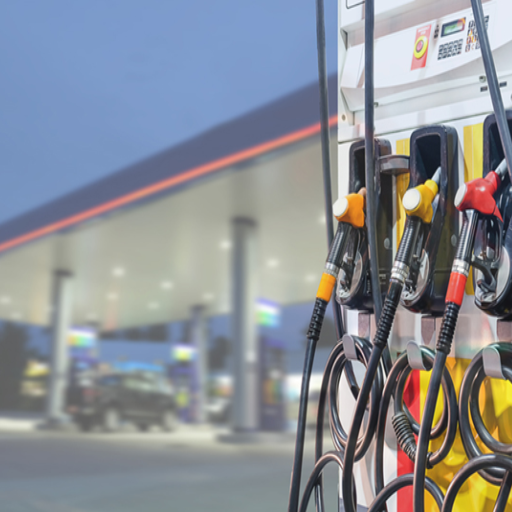Safety comes first in hazardous working settings. Facilities located in areas where flammable gases, vapors, or combustible dust might exist have to sit under a very stringent safety framework in order to mitigate any risk. Here, another crucial aspect to be considered in safety-vectoring is the correct choice of lighting. Explosion-proof LED lighting has proven to be the safest and most trusted solution for illuminating hazardous areas. So what does ‘explosion proof’ exactly mean, and how do these lights work? This blog highlights the key points-the working principle, benefits, and applications of explosion-proof LED lights to assist you in making well-informed decisions for your facilities’ safety and compliance needs.
What is Explosion-Proof Lighting?
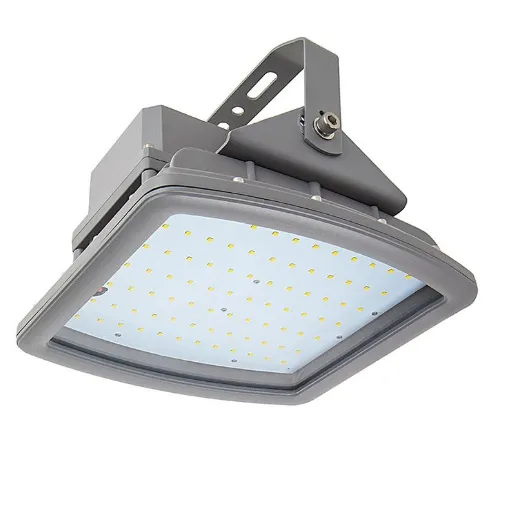
Explosion-proof lighting is lighting installed and employed in hazardous atmospheres where flammable gases, vapors, or dust may be present. Such lighting systems prevent any sparks or heat that can be generated inside the fixture from reaching the outside atmosphere. In essence, explosion-proof lighting isolates potential sources of ignition so as to protect personnel and equipment in allowable atmospheres that can explode based on industrial, chemical, or manufacturing facilities.
Definition and Importance
An explosion-proof lighting fixture is one designed so that it cannot ignite a flammable atmosphere in a hazardous location. The fixture is designed sturdily so that any internal explosion of gas or dust in the fixture is contained within and does not propagate to the outside atmosphere. This technology is very important in industries like oil and gas, chemical manufacturing, and mining, wherein even a small spark can have disastrous consequences.
Market Growth Statistics
The explosion lighting market is expected to grow at a CAGR of roughly 6% between 2023 and 2030 due to increasingly stringent safety norms and the growth of other industries operating in hazardous conditions.
Several recent developments indicate the growing acceptance of explosion-proof lighting worldwide. Per industry statistics and reports, the explosion lighting market is expected to grow at a CAGR of roughly 6% between 2023 and 2030 due to increasingly stringent safety norms and the growth of other industries operating in hazardous conditions. The LED-based explosion-proof lighting has gained popularity due to its energy efficiency, low maintenance, and long life. This not only enhances safety but also promotes sustainability by cutting down energy consumption and operational costs. The industries continue to emphasize safety, and explosion-proof lighting is still crucial for protecting workers and building materials.
How Explosion-Proof Lights Work
Explosion-proof lights are designed so that if any explosion issues occur within the light fixture, it would not be able to ignite any hazardous gases, vapors, or dust in the environs around it. Essentially, the principle centers on sturdy housing and materials able to stand highly unfavorable conditions. The enclosures in these lights are typically aluminum or stainless steel materials or high-strength glass that would confine any sparks or flames internally so as not to escape and ignite any flammable substances externally.
The lighting assembly is hermetically sealed to ensure no contact between the hazardous elements of the outer atmosphere. Furthermore, lights undergo numerous tests and certifications under standards such as ATEX or IECEx to earn the approval of industry regulations for hazardous locations.
Most modern explosion-proof lights, particularly LEDs, enhance safety during operation by eliminating filaments or glass that can break and cause sparks, in addition to functioning cooler than the conventional types.
LED Performance Benefits
LED-based explosion-proof lighting can save as much as 50% in energy over conventional HID units while offering 5 to 10 times longer operational lifetime.
Such as Data proves that LED-based explosion-proof lighting can save as much as 50% in energy over the conventional HID units while offering 5 to 10 times longer operational lifetime. These emergent lighting systems are tailored to work in areas such as chemical plants, oil refineries, and grain silos, where the presence of flammable materials accounts for constant hazard. Integration of such latest technology shall ensure both safety and optimum cost.
Types of Hazardous Areas
Hazardous areas are classified according to the potential risk accepted, given the presence of flammable gases, vapors, dust, or fibers if ignited under specific conditions. They are the classifications meant to look after safety, ensure appropriate working conditions, and provide suitable equipment for them. Listed below are the principal types of hazardous areas:
Class I Areas (Gas and Vapor Hazard)
Class I locations are sites where flammable gases or vapors may be present in sufficient quantities to create an explosive atmosphere. Common facilities include oil refineries, gas processing plants, and chemical manufacturing units. Data indicate that a large percentage of industrial explosions occur in these areas, with methane, propane, and hydrogen being the common gases involved.
Class II Areas (Dust Hazard)
Class II locations involve the presence of combustible dust particles, which, once they become suspended in the air, may ignite. Grain silos, sugar refineries, and pharmaceutical manufacturing are examples of industries that face such risks. Safety reports show that approximately 70 percent of dust explosion incidents occur in the agricultural and food processing sectors, further emphasizing the need for dust control measures in these industries.
Class III Areas (Fibers and Flyings Hazard)
Class III areas are those wherein easily ignitable fibers and flyings of cotton, flax, or wood particles are present. These particles may accumulate around machinery and cause a fire hazard. Textile mills, woodworking plants, and furniture-making establishments are some examples of such environments.
Safety Considerations
Each type of hazardous area presents its unique hazards that demand specific measures and certified equipment for risk mitigation. Knowledge of the classification and appropriate technologies is a consideration toward safeguarding and ensuring compliance in the industrial environment.
Types of Explosion-Proof LED Lights
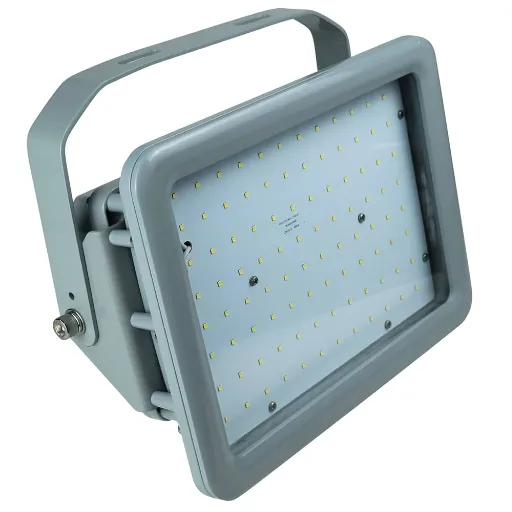
| Light Type | Application | Key Features |
|---|---|---|
| Class I, Division 1 LED Lights | Areas where flammable gases or vapors are present under normal working conditions | Designed to ensure ignition never occurs in surrounding substances, creating safe atmosphere around hazardous sites |
| Class I, Division 2 LED Lights | Areas where flammable gases or vapors are not normally present but may occur accidentally | Suitable for relatively less hazardous industrial zones with potential for accidental release |
| Class II LED Lights | Areas with combustible dust (grain processing, textile production) | Minimize ignition risk by containing sparks or heat inside the fixture |
| Class III LED Lights | Areas with ignitable fibers or flyings (woodworking) | Designed to withstand hazards of fiber-rich environments |
Important: The proper choice of explosion-proof LED light for a given classification makes an industrial installation safe and helps meet the regulatory standards on safety.
LED Explosion-Proof Light Fixtures
Hazardous environments with the presence of flammable gas, vapors, or dust need safe explosion-proof lighting installations. The following answers are synthesized succinctly from major authors:
What makes a light explosion-proof?
Exploding Light is one whose sparks, heating, or flames do not provide ignition for hazardous substances outside the fixture. The very sturdy construction using tough materials such as aluminum or tempered glass to even withstand benchmark situations ensures safety.
Where are explosion-proof LED lights used?
Such lights are used in industries such as oil and gas, chemical manufacturing, mining, and food processing. They must be installed in Class I, II, and III hazardous locations where an explosive atmosphere might develop owing to the presence of gases, dust, or fibers.
Advantages of explosion-proof LED lights
Compared with traditional lighting, explosion-proof LEDs offer greater life, consume less energy, and need negligible maintenance. They can offer sufficient illumination to hazardous areas, thus improving the visibility and operational ability of employees working in such areas while complying with safety standards.
How to select the proper explosion-proof LED light
The selection of the right explosion-proof light depends upon the classification of the location where it is to be installed (Class I, II, or III) and the hazards that exist in such an environment. Other factors to consider are temperature rating, mounting configuration, and certifications such as UL or ATEX compliance.
Hence, the utilization of explosion-proof LED lighting technology ensures the safety of the workers, meets regulatory adherence, and improves efficacy at hazardous working locations.
High Bay and Area Lighting Solutions
High bay and area lighting is applied for the illumination of large areas such as warehouses or industrial measurement areas. This lighting offers a high-performance standard while also considering aspects of energy conversion and durability where needed. High bay lighting must take into consideration the lumen output, the beam angle of the light, and the mounting height to achieve good coverage and appropriate brightness.
LED High Bay Advantages:
- Energy-efficient nature with significant power savings
- Very long operational life, minimizing maintenance costs and downtime
- Superior performance in harsh industrial conditions
- Advanced controls compatibility (motion sensors, dimming, smart connectivity)
LED high bays have gained popularity for their energy-efficient nature; also, they have a very long life, thus minimizing maintenance costs and downtime. Area lighting, normally a solution for outdoor spaces, should feature designs that resist weathering and corrosion through thereby allowing for longevity of use even in harsh weather conditions. This becomes particularly important considering that in such conditions and environments, certifications such as DLC, UL, or ATEX would provide important assurances as to their environmental and safety compliance.
Motion sensors, dimming, and smart connectivity are examples of advanced controls that could be installed on high bay and area lighting systems for enhanced energy management and operational adaptability. High-quality solutions also enhance safety and visibility, cutting down on costs and being a more sustainable choice in the long run.
Flood Lights for Hazardous Locations
Hazardous location floodlights are created to meet rigid safety standards for environments involving perhaps flammable gases, vapors, or combustible dust. These lights can withstand the elements and usually range from Class I, II, or III explosion-proof ratings so that they may operate reliably even under severe conditions. Such lights provide a steady source of illumination, lowering accident rates and increasing visibility in imperative work areas.
Energy efficiency, light output, and suitability for certain certifications like UL, ATEX, or IECEx are some of the considerations taken into account while selecting a floodlight for hazardous locations.
LED floodlights, in general, continue to grow in popularity, driven by their longevity and ostensibly lower energy consumption and maintenance. Other features, such as variable beam angles, rugged housings, and advanced controls, allow the lighting to be tailored for the peculiar requirements of industrial environments.
Generally, floodlights for hazardous locations are safety features that combine the ruggedness of design with technology to enable efficient operations and worker protection.
Applications of Explosion-Proof Lighting
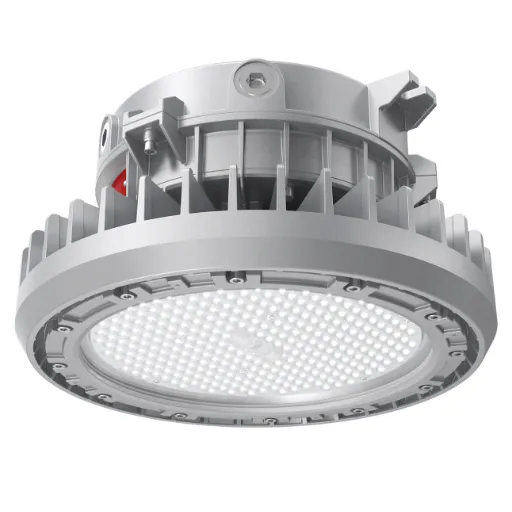
Primary Applications
The main use of explosion-proof lighting is at places where flammable gases, vapors, dusts, or fibers could explode under standard lighting. Some of the common uses are:
Oil and Gas Facilities
Explosion-proof lighting ensures safe illumination of refineries, drilling rigs, and processing plants.
Chemical Plants
The lighting installation ensures safety in areas where volatile chemicals or reactive substances are being handled.
Mining Operations
The lighting ensures safe illumination of underground operations where combustible dust is present.
Manufacturing Facilities
Explosion-proof lighting prevents any risk of ignition in production areas where flammable materials are being handled.
Wastewater Treatment Plants
The lighting is provided at locations where chemical tanks or explosive gases are present.
These lights are basically installed for safety and compliance in hazardous industries.
Industrial and Commercial Uses
Explosion-proof lighting is essential for workers’ safety in hazardous environments. These lights can function efficiently with the presence of an explosive gas, vapor, or combustible dust. Hence, in all industries where safety comes above all else, these lights are used.
Some principal industrial and commercial applications include:
- Oil and Gas: Explosion-proof lights are widely employed in refineries, offshore platforms, and pipelines, where flammable materials are consistently posing potential dangers. They render safe operations and comply with several stringent standards of the industry.
- Chemical Processing Plants: When volatile chemicals or reactive substances are involved, explosion-proof lighting is preferred, creating a very low chance of ignition to protect workers and assets.
- Mining: The lighting in mines is essential as there is a high presence of combustible dust. Inside these confined spaces, explosion-proof fixtures mitigate the risk of fire and explosion.
- Manufacturing and Warehousing: In industries where flammables are handled, for example, in textiles, food processing, or automobile production, these lights guarantee safety and operational flexibility.
- Wastewater Treatment: With the possibility of exposure to harmful chemical tanks and gases, explosion-proof lighting maintains safety while ensuring performance with durability through adverse conditions.
Thus, amalgamating the latest safety features with energy efficiency, explosion-proof lighting has become an absolute necessity in hazardous industrial and commercial environments. These fixtures allow for smooth operations while ensuring compliance, thus significantly reducing risks.
Lighting for Gas and Vapor Environments
Lighting in gas and vapor environments requires specially designed lighting fixtures engineered to withstand explosive atmospheres. Such areas may contain flammable gases, vapors, or mists that can be ignited by common lighting installations. Explosion-proof lighting serves the purpose of containing any sparks or heat generated within the fixture, so as not to ignite an explosive atmosphere outside.
Key considerations for this lighting include:
- Compliance with applicable industry safety standards, such as OSHA and NEC
- Proper certification for the hazardous zone or class in question
- LED options that are energy efficient with better lifespan and reduced running costs
- Proper installation and maintenance for sustained performance and safety
Considering all these factors, lighting systems will contribute to safety and functioning in dangerous gas and vapor environments.
Compliance with Safety Standards
Ensuring compliance with safety standards in hazardous environments requires adherence to strict regulations and guidelines. Key standards like the NEC (National Electrical Code) and IECEx (International Electrotechnical Commission System for Certification to Standards Relating to Equipment for Use in Explosive Atmospheres) provide frameworks for the design, installation, and maintenance of lighting systems.
Lighting fixtures must be tested and certified for the specific hazardous zone or class they will be used in, ensuring they meet criteria for explosion resistance and safe operation. Regular inspections and documentation are essential to maintain compliance and address any potential risks proactively. Additionally, staying updated with evolving safety standards and advancements in technology can help organizations enhance both safety and efficiency in high-risk areas.
Choosing the Right Explosion-Proof LED Light
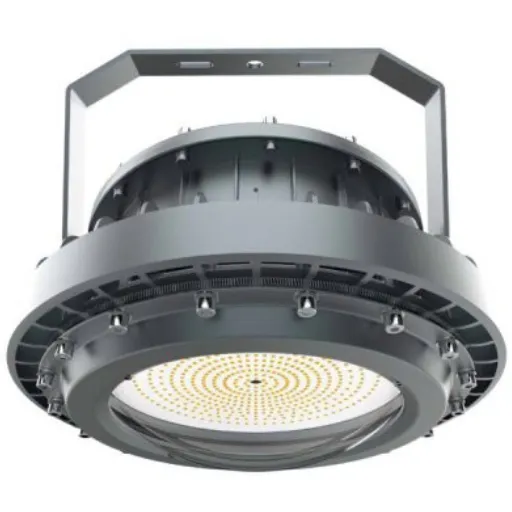
On choosing the proper explosion-proof LED light, focus on the requirements of your hazardous area. First, identify the classification and zone in which the light shall be used to ascertain that the safety standards are fully complied with. Consider the rigidity, energy consumption, and certification of explosion resistance of the particular light. Such products must be from manufacturers recognized to be in compliance with the relevant regulations-that is, UL or ATEX standards. Consider the brightness, beam angle, and lifespan of the LED light to align operational requirements of the environment. Prioritizing all will twin safety and performance.
Understanding Class I Division Ratings
The Class I and Division ratings are assigned to hazards where flammable gases, vapors, or liquids may be present. They basically define the type and degree of hazard existing in an environment and the safety measures that are to be ensured.
| Classification | Description | Risk Level |
|---|---|---|
| Class I | Circumstances under which hazardous gases, vapors, or liquids are present | High Risk Environment |
| Division 1 | Hazardous substance exists in normal operating conditions or frequent repair/maintenance operations | Continuous/Frequent Exposure |
| Division 2 | Hazardous substances not present during regular operations but may occur in case of equipment failure or abnormal operations | Intermittent/Accidental Exposure |
These classifications adopted by bodies such as NEC determine the equipment selection suitable for accident prevention; for instance, explosion-proof lighting or motor. It would thus be wise to make sure that the products are in line with the NEC and also international standards such as UL or ATEX for maximum safety in hazardous environments.
Factors to Consider: Lumen Output and Fixture Type
When picking a light fixture for hazardous sites, one must consider the lumen output and fixture type since these properties will determine the safety factor, efficiency, and compliance with legal parameters. Lumen output is basically the visible light given from the fixture. The lumen output to be chosen depends on the application requirements to either prevent under- or over-illumination. For example, high lumen fixtures are supposed to be used in large areas and places where high visibility is required, unlike lower lumen fixtures that may be suitable for a smaller area.
Fixture type is also paramount because it must be compatible with the particular hazardous classification and environmental conditions. Explosion-proof LED fixtures are, for instance, quite popular because of their ruggedness, energy efficiency, and capability to withstand very harsh temperatures and moisture. The fixtures should be selected alongside options such as mounting (ceiling, wall, portable) and beam angles adapted to the particular need for lighting level.
Taking into consideration the above-mentioned factors and standards like NEC, UL, or ATEX, will guarantee lighting solutions that are reliable and compliant for hazardous environments.
Benefits of LED Lighting in Hazardous Locations
LED lighting presents several benefits in hazardous environments, thus making it a top-ranked option in industrial and high-risk environments:
- Energy Efficiency: LEDs are greatly energy-efficient; hence, they consume less electricity compared to conventional types of lighting, thereby lowering the operating costs.
- Extended Lifespan: They last for a long time, typically more than 50,000 hours, to avoid frequent changes and high maintenance in hard-to-reach and dangerous locations.
- Lower Operating Temperature: They are much cooler when operational than conventional lighting and so pose less risk of setting off combustible substances at dangerous places.
- Durability: Their rugged design makes them very durable; they can resist heavy vibrations and shocks and hostile environmental conditions that tend to put a light out in a really short duration.
- Instant Illumination: LEDs turn on and provide illumination instantly, focusing sharp and clear light for better visibility, enhancing safety, and improving operational efficiency.
- Safety Compliance: Compliant with all applicable safety standards, such as NEC, UL, and ATEX, LED illumination makes for the best alternative in hazardous location applications.
Installation and Maintenance of Explosion-Proof Lighting
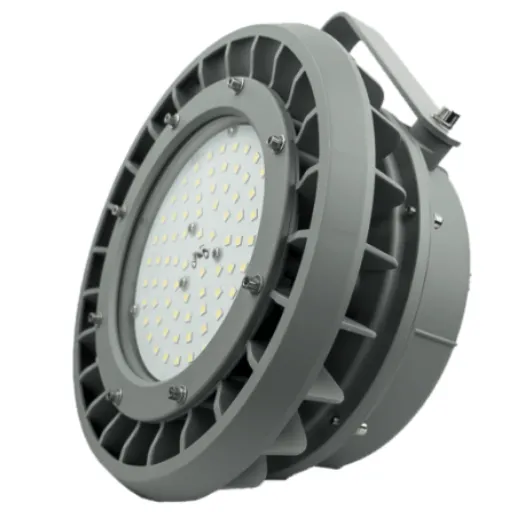
Installation Guidelines
For the safety and reliability of hazardous locations, explosion-proof lighting must be installed and maintained properly. Installations should be carried out according to manufacturer instructions, guaranteeing the tight sealing of all components to avoid the ingress of flammable gases or dust. Inspect all connections to ensure that they are tight and adequately grounded.
Regular inspections for signs of wear, evidence of damage, or loose fittings are essential in maintaining the explosion-proof fixtures. Ensure that before any maintenance is undertaken, the lighting system is de-energized. Only damaged parts certified by the manufacturer should be replaced. Cleaning should also be performed periodically to eliminate dust and debris that might hinder the best operation. Follow all applicable safety standards while carrying out the entire procedure as well.
Best Practices for Installation
- 1Prepare the Workspace for Installation
Make sure the installation area is clean, level, and laid out free of obstruction, then allow all necessary tools to be picked up before beginning to avoid any delay during the procedure. - 2Follow Manufacturer Guidelines for Installation
Always read thoroughly the product manual or installation guide provided by the manufacturer. Installation following these instructions shall comply with safety and performance standards. - 3Measurement and Alignment Should Be Right
Checking again will never be a fault to ensure measurements and alignments for correct placement. Use a level or a measuring tape to prevent mistakes that could lead to costly changes. - 4Use Proper Tools and Fasteners
Use the tools and fasteners specified for the job. Using unapproved tools might thwart the installation and may even void warranties. - 5Testing and Inspection after Installation
At the completion of the work, do a thorough inspection of the installation. Test for its functioning, stability, or alignment, depending on whatever is applicable, and rectify any problems at once.
Adhering to these best practices will ensure a safe, efficient, and professional installation process that guarantees lasting results.
Regular Maintenance Tips
I try to carry out inspections, cleaning, and repairs on time to maintain performance and lifespan at optimum levels. I check for any signs of wear, loose components, or damage and address them immediately; keeping the installation clean and free of debris also helps in the prevention of issues. I also follow the theoretical maintenance instructions laid down by the manufacturer for smooth operation.
Common Issues and Troubleshooting
Mechanical Failure
Loose bolts and screws and damaged parts are the source of some operational issues or unsafe conditions. Make sure to regularly check for loose hardware, tighten them when needed, and replace any parts that may be damaged.
Unusual Sounds or Vibrations
These noises or environmental vibrations usually signal flexibility or misaligned or worn-out parts. Investigate any loose components, misaligned structures, or damaged moving parts and eliminate the cause.
Operational Failures
When the system fails to perform as intended, make sure all the power and connection settings are correct. Most times, functionality can be restored just by replacing a blown fuse, resetting a switch, or reconnecting a wire. Refer to the user manual for instructions.
Corrosion or Dirt Build-Up
Corrosion or buildup of dirt can affect performance. Clean and lubricate the parts on a regular schedule, and use appropriate cleaners and protectants to halt it.
Slow Decline in Performance
Decreased efficiency often results from wear and tear or neglect of maintenance work. Constant maintenance must be scheduled, and aging parts must be replaced to maintain efficiency at its peak performance level.
Note: For further troubleshooting, reference manufacturer manuals or engage a professional technician.
Reference Sources
“The Design and Application of Flameproof Lighting Equipment”
“Laboratory explosion accidents: Case analysis and preventive measures”
Frequently Asked Questions (FAQs)
How would you define explosion-proof lighting fixtures?
Explosion-proof light fixtures prevent hazardous locations from igniting flammable gases or dust. They are built to contain any explosion occurring inside the fixture so that they maintain safety where the presence of hazardous materials exists.
What is the difference between LED explosion-proof lighting with traditional lighting?
LED explosion-proof lighting incorporates the very best in LED technology for higher energy efficiency and longer life than the traditional method of lighting. The heat generation is also low, and maintenance may be kept to the bare minimum, which is important in hazardous locations.
What explosion-proof lighting requirements exist?
Explosive-proof lighting systems shall carry specific certification standards such as those applied to the National Electrical Code (NEC) and Underwriters Laboratories (UL). These standards categorize fixtures based on the class and division of the hazardous area for which the fixtures are intended so that they can safely operate in an explosive environment.
What kind of hazardous locations require explosion-proof lighting?
Hazardous locations requiring explosion-proof lighting include those where flammable gases, vapors, or dust are present, such as oil refineries, chemical plants, or warehouses for hazardous materials. Familiarity with explosion-proof lighting ensures compliance with and safety requirements in such venues.
What is the cost of the explosion-proof lighting system?
Costs for explosion-proof lighting systems can vary widely depending on factors including the type of fixture, wattage, certifications required, etc. While upfront costs may be higher than those of a standard lighting system, these can prove to be savings in the long run because of durability and reduced maintenance.
What is the process for choosing an explosion-proof lighting solution for the given application?
Choosing the right explosion-proof light includes considerations of materials involved, lumen output required, and the nature of lighting needed for the work. Getting help from an expert in hazardous area lighting will help you understand the best solutions for your particular application.
What maintenance will have to be done for this type of lighting?
Maintenance of explosion-proof lighting requires inspections to verify the integrity of the fixtures and their seals. LED explosion-proof lights require less frequent replacement than do older generation explosion-proof fixtures, but following manufacturer recommendations is the safest and most cost-effective way to keep all systems operating at their best.
What benefits does LED explosion-proof lighting provide to industrial environments?
The benefits of LED explosion-proof lighting set up inside industrial environments are many: notably better quality of lighting, energy efficiency, and little heat emission. This type also requires harsh conditions under which the fixture needs to be toughened, making it ideal for warehouse lighting and various demanding applications.

